Archive for the ‘Orange County hair transplant’ Category
Tuesday, December 29th, 2009

One of the main concerns for people suffering from hair loss is hair transplant cost. For a hair restoration surgery, the prices vary greatly.
The financial expense for a hair transplant is at an all-time low, especially when a person takes into consideration the high quality of transplants in this day and age. When a prospective client does research on getting a hair transplant surgery, it’s crucial to note that it’s not like purchasing a desktop computer or LCD TV, in which there are differing prices for the same exact model if a person does enough bargain hunting. Also, when it comes to a hair transplant, there can be significant discrepancies in the quality of the transplant you receive.
Over the last ten years, the hair restoration industry has seen a lot of positive changes. There were hair transplant centers which made sure to continue using the most effective and proven procedure methods introduced at meetings and continued to use the latest technologies to make surgeries more accurate. Amazingly, I’ve met a few people who have had micrograft surgery (an outdated procedure) in Beverly Hills. Also, sadly, I’ve also seen transplants done without regard to a patient’s facial aesthetics. Skimping on a few details in the process can prove to be catastrophic. Small changes here and there in the direction and distribution of transplanted hair might mean the difference between a beaming, happy client and an unsatisfied patient.
Apart from the aesthetic parts of a hair transplant, the preparation and maintenance of hair grafts are absolutely essential and are to not ever be taken for granted, which may result in poor hair growth after surgery.
Considering these facts, getting a hair transplant by a qualified hair restoration surgeon is well within the range of affordability. In the present age, the price of a medical hair restoration is at its lowest since hair transplant practices began in the early 1990s. Today, due to the current state of the economy, a lot of hair transplant centers are promoting special discounts and promotions which wouldn’t exist in a more thriving economy. At US Hair Restoration, we have a special promotion: 20% discount on standby rate; also, there’s 0% financing for two years or low interest financing for five to six years.
The low price of hair restoration is a good incentive for people to get it done with a notable monetary discount. We must warn you, though: although we offer very competitive hair transplant pricing, we must say the hair restoration industry is a buyer-beware market. US Hair Restoration offers 20% off our high-quality state-of-the-art hair transplant costs. The discount brings the rate down to $3.20 per graft compared to our original cost ($4 per graft). If a prospective client does his due research, he can find hair restoration centers which offer low-priced hair transplant surgery at $2 per graft, but this isn’t like comparing two pairs of jeans. In other words, there may be a marked difference in quality.
Remember, a hair transplant will have a long-lasting effect on your physical appearance, especially face. This is a procedure which ought to be given serious though. Even if a hair transplant center uses the most updated surgical procedures and the most prestigious personnel, they can’t dip below a certain price range, or else they won’t profit. Watch out for unbelievably low prices and massive discounts. Make sure to meet the doctor face-to-face. Several of them. Do personal research, which will enable you to ask the right questions about the techniques and types of service being provided.
When it comes to hair transplants, or other types of cosmetic surgery, I recommend you don’t do bargain shopping. It just isn’t the right way to go about it. There are a lot of hair restoration offices offering ridiculously discounted hair transplants. Let me remind you, there is one fact about hair transplants which has the potential to be wonderful or regrettable: the result.
Tags: cost of hair restoration, cost of hair transplant, hair restoration cost, hair restoration surgery cost, hair transplant cost, hair transplant discount, hair transplant expensive, hair transplant surgery cost
Posted in Bakersfield hair transplant, California hair transplant, hair transplant, men hair restoration, Newport Beach hair transplant, Orange County hair transplant | No Comments »
Tuesday, December 22nd, 2009
Q:
How long is the bleeding on my head going to last after my surgery?
A: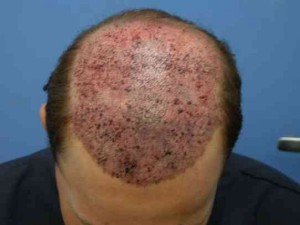
There ought to be no blood after a hair restoration procedure. The day after the transplant, there might be some bloody discharge from the donor area. But that ought to be the extent of it. Our policy is to wrap a gauze around the closed donor wound for a night. Then, the next day after your procedure, you’ll come back to our office and we’ll remove the gauze, after which we’ll wash your hair. Usually, you don’t have to wear the gauze on the donor area anymore after a hair wash, unless there are complications, which is rare.
Tags: after hair transplant, bandage after hair transplant, bleeding, Donor Wound
Posted in Bakersfield hair transplant, California hair transplant, hair transplant, men hair restoration, Newport Beach hair transplant, Orange County hair transplant | No Comments »
Saturday, December 19th, 2009
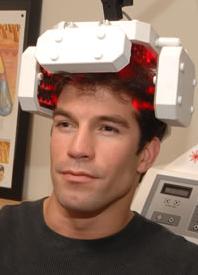
Hair transplant surgery has evolved in the last 10 years thanks to microscopic techniques and research which elucidated the mechanism of hair loss and hair restoration surgery. We now can transplant with maximum natural results. We also increased the number of grafts which could be safely removed and harvested during a single hair transplant procedure. Mega session hair transplants have been a very hot topic and an interesting idea for many people who have a large balding area that cannot simply be covered with anything less than 3000-4000 grafts.
At the offices of US Hair Restoration, we evaluate every patient for the quality of donor hair and scalp which will determine the number of grafts that could be safely harvested and transplanted in one surgery. Many people who are getting their first surgery can have over 3000 grafts. We have numbers of up to 5000 grafts, too.
Laser hair restoration is a pretty new concept and unfortunately we still do not have enough solid research published in peer reviewed journals documenting its effectiveness. There have been some results in smaller studies with some effect. However, I would rather wait on that until we have more research-proven documents in that regard.
You need to be evaluated for your donor potential and can consider surgery after that. US Hair Restoration has special hair transplant travel reimbursements for patients like you who have to fly from other cities. We also provide hotel and transportation to and from the hotel for anyone who has to commute more than 50 miles to get to our hair restoration center.
Tags: hair loss, hair restoration, hair transplant, hair transplant cost, hair transplant travel, hair transplant travel reimbursement, laser hair transplant, laser hair treatment
Posted in Bakersfield hair transplant, California hair transplant, hair transplant, men hair restoration, Newport Beach hair transplant, Orange County hair transplant | No Comments »
Wednesday, December 16th, 2009
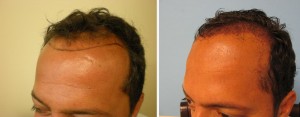 Before and After Pictures; First Day After Hair Transplant Well, on the first day we’re usually forced to kick out our patients from our office because they grow so fond of us and don’t want to leave! Well, not all the time. But our patients do like us, which is something we’re very proud of.
On a more serious note, I’ll say this: Transplanting hair is a very delicate and painstaking procedure. After a hair transplant is over, it is of utmost importance to constantly monitor and properly care for the transplanted area. US Hair Transplant’s policy is to book a patient for a hair washing the day after his or her transplant. The hair washing takes about half an hour. At our office, we use thick shampoo to clean the transplanted hair grafts. We make sure to be gentle and only spread foam and dab the transplanted area. After two minutes, we rinse off the shampoo with water.
During the first visit, another area we wash is the donor area. As a parting gift, we provide our patients with a sponge, which has a soft brush on one side. The brush is used to clean the donor area and the sponge for the transplanted area. When it comes to washing the donor area, a patient may use a bit of aggression as the wounds are stapled or sutured. The soft brush can be rubbed, ever so gently, on the back of the patient’s head to remove scabs and extra debris from the surgery.
Remember: hair washing ought to be done twice daily for first four days, after which it can be done once a day.
Because of dedication to patients, we teach them how to properly care for the transplanted area. The first four days are important, as the grafts in the transplanted area may dislodge if they aren’t washed with care. After the first four days, the patient can go back to washing his hair the way he did before surgery as the grafts, at this point, are most likely sealed and part of the person’s scalp even if the hair is moved. The remaining follicles are able to generate new hairs.
To prevent scabs, we urge our patients to wash hair using our particular technique. It’s important to note several studies have shown that scabbing may prevent transplanted hair growth. After seven days from day of surgery, there ought not to be any scabs. If scabs still appear after the seven days, it means washing wasn’t done the right way and the patient must start being a bit more aggressive in his washing technique.
After four days have passed, patients can wash their hair twice a day. In addition, patients ought to let the foam alone for ten minutes to let scabs soften. Afterward, patients can use the soft brush we provide to comb their hair in the direction of their other hairs.
Also we make sure to let our patients know to not dunk their head in water the first week after the transplant, and to try not to bend their head too frequently during the first month. Also, the first six months after surgery, we tell our patients to keep the transplanted area away from sunlight.
As time passes, the transplanted hair will grow and be able to protect the skin grafts from the sun’s ultraviolet rays.
Tags: after hair restoration surgery, after hair transplant, care after hair transplant, couple days after hair transplant, few days after hair transplant, hair transplant, hair transplants
Posted in Bakersfield hair transplant, California hair transplant, hair transplant, men hair restoration, Newport Beach hair transplant, Orange County hair transplant | No Comments »
Monday, November 30th, 2009
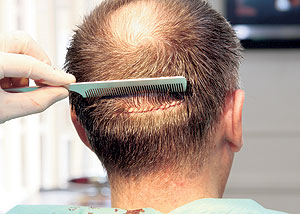 Hair transplant surgery is designed to restore hair in men and women depending on the condition. For most, this is done in the event of male or female patterned hair loss. Others may use this procedure for other areas of the body that may have once had hair like the eyebrows and others to place hair like facial hair or where they may see fit. The only remaining issue is the scar that remains in the donor area after a hair transplant procedure. Hair transplant surgery is designed to restore hair in men and women depending on the condition. For most, this is done in the event of male or female patterned hair loss. Others may use this procedure for other areas of the body that may have once had hair like the eyebrows and others to place hair like facial hair or where they may see fit. The only remaining issue is the scar that remains in the donor area after a hair transplant procedure.
Can this be avoided? Is there any way to remove or conceal an existing scar?
Depending on the procedure, the scar can either be avoided or minimized. Follicular unit extraction (FUE) is an advanced hair transplant procedure where hair graft units are selectively extracted and refined without leaving a linear scar in the donor area. This technique has also been used to transplant hair into an existing hair transplant scar. This is one technique used to conceal a donor area scar but it does not remove it. The objective is to conceal the scar as much as possible.
For those patients looking into hair transplant surgery, follicular unit transplantation (FUT) is the golden standard in hair restoration. There are ways to minimize the scar’s appearance. In most cases, a hair transplant surgeon can use single or dual trichophytic closure to minimize the visibility of the scar in the donor area. This technique allows hair to grow in through the scar creating an illusion and concealing the scar. Patients whom have had a hair transplant procedure can undergo scar revision and have the existing scar excised and reclosed using this technique if it has not already been done.
As stated, the objective is to minimize the visibility of the donor scar. If the patient is undergoing hair transplant surgery through FUT, you must bear in mind that a scar will still be present. It has been noted that Botox can also be used to avoid additional stretching of the scar further preventing visibility. This should be taken care of right after a hair transplant procedure. These options should be discussed with your hair transplant surgeon to assure that you are getting exactly what you want out of your hair transplant procedure.
Tags: hair restoration scar, hair scar, hair transplant scar, how to remove hair transplant scar, remove hair restoration scar, remove hair transplant scar, remove scar
Posted in Bakersfield hair transplant, California hair transplant, hair transplant, men hair restoration, Newport Beach hair transplant, Orange County hair transplant | No Comments »
Saturday, November 28th, 2009
Q:
To Dr. Mohebi:
17 days have passed since my hair restoration procedure at your office in the San Fernando Valley. As I remember, I had an FUT procedure with bi-lateral trichophytic closure performed for about 650 grafts to reinforce my front hairline. I want to make sure to say first off that I’m extremely grateful for the time you took to answer the questions I had in a well-informed and honest manner. Also, I’d like to say I had a wonderfully positive experience and was treated kindly by everyone at your office. It was a much different experience than the first time I had a hair transplant with someone else.
Included are five photographs (recently taken) of my grafts about fourteen days after the surgery. I got rid of the scabs on the grafts and donor area. I noticed the hair grafts are now growing, and a few have fell off the scalp. I have a few inquiries.
- One snapshot reveals, at the pinnacle of the front hairline, a red circle and the particular area looks bald and bare. Do you remember planting any grafts in this part of my head. I expected this part to have hair growing on it because the front tip sticks out.
- The donor area feels sensitive and it’s still painful but also numb in other parts. I’m wondering if this is what usually happens after a fortnight.
- The back of my head (donor area) feels stretched and makes it hard for me to look at my shoes or look down when urinating. It’s a bit painful. I don’t think I had this issue after my first hair transplant. Or maybe the pain wasn’t as prolonged as it is now. Maybe it’s because the bi-lateral trichophytic closure is on another scarline? When do you think the pain in my donor site will go away?
Thanks again for the well-done procedure. I look forward to hearing back from you.
A:
It warms my heart that you enjoyed your visit with us when getting your hair transplant. You underwent a donor scar revision procedure to enhance the look of your donor linear scar on the back of your head with a two sided tricophytic closure to ensure hair growth into the scar for the highest invisibility. About your questions, I’ve written below my responses to them in chronological order.
- Intentionally, we made the frontal area irregular so it wouldn’t appear to look linear and reconstructed. After the hair transplant, you ought to have lost a good number of grafts. The way your hair looks now and is not the way it will look eventually. I’d advise you to wait at least another six or seven months so all your hair will have grown out. It will look much better.
- As part of the healing process, a bit of inflammation is normal and will appear about two weeks after a hair transplant procedure. But, if the inflammation doesn’t eventually go away or if it becomes more inflamed, come to my office immediately.
- You may feel more pain and stretching on the back of your head because you’ve had previous surgeries. There wouldn’t be as much pain in the donor site if you hadn’t ever had a hair transplant. Try not to look down too much or in a herky-jerk manner for the following eight weeks after surgery because there’s a risk of stretching out the donor scar. On the second month, if there’s still pain, visit me and we’ll take a look at it. In the meantime, if there are other questions you may have about hair growth or other inquiries regarding your hair transplant, call and make an appointment to see me.
I’m eager to meet with you again in later visits.
Tags: bilateral tricophytic closure, hair grafts, hair transplant scar, pain after hair transplant, scabs of hair transplant, tension after hair transplant, tension of donor wound, trichophytic closure, tricofitic, tricophytic closure
Posted in donor scar, hair transplant, men hair restoration, Newport Beach hair transplant, Orange County hair transplant | No Comments »
Monday, November 23rd, 2009
Q:
Hello Dr. Mohebi,
It’s my sixth day after I got my hair transplant in Los Angeles and all seems to be healing and on track. The other day, when I was shampooing, I noticed some follicles. Maybe about six of them. Is this something to be concerned about?
What I’m pressing about is the staples area of my head. It doesn’t look infected or have a lot of inflammation, but it is really sensitive, meaning that I feel pain each time I hit that area of my head on something or just swipe my head past a car head cushion. Also, with not much shock, the pain level has increased as I’ve taken less anti-inflammatory drugs. Are there any over the counter pills you’d recommend. Whether topical or oral drugs, it doesn’t matter to me.
All I know is, I’m really stoked about getting these staples removed in a few months! Can’t wait until they’re off.
Thanks,
A:
Dear Joe,
After a period of time, the closed donor wound sensitivity to pain and its tenderness will decrease. But after a few days, the patient might feel some pain in the donor area while on medication. If the case happens to be that the transplant donor area is becoming more sensitive, pay me a visit and I’ll take a look at your donor area to make sure its healing properly.
Yours truly,
Tags: Anti-Inflammatory, Donor Wound, Follicles, Healing, Inflammation, Pain Killers
Posted in California hair transplant, hair transplant, men hair restoration, Orange County hair transplant | No Comments »
Thursday, November 19th, 2009

Q:
Not too long ago, I had a hair transplant (using FUE). Things were OK until several months after the transplant. I spent some time having fun in the sun, and it was maybe close to triple digit degrees outdoors. As soon as I got back to my house, I noticed my scalp in the transplanted area had turned white. It looked like the skin on my head had been scorched. But I didn’t think it was a big deal and I kept on using the Minoxidil with Betaderm spray, which my doctor highly recommended.
A few weeks later, the top of my head (which had been grafted) began to peel and the skin fell off (like a sun burn). And there were a few transplanted hairs which fell off as well, with the skin. This really alarmed me. After about eight weeks, the scalp seems to have healed, although there is some redness in places; but, overall, it seems to be OK. But, I’m a bit worried about the condition of my after-playing-in-the-sun scalp. I know it was probably a sun burn, but I just hope my grafts weren’t damaged beyond repair. I’ve done some research on skin consequences of sun burn, but I wonder if the grafts can ever fully recover from the exposure to the ultra-violet rays. I know if my skin becomes more tan, it’s OK. But about my grafts, I’m really concerned about them.
I need answers, doc.
Yours truly,
A beach bum with a hair transplant
A:
Hey beach bum,
Skin and scalp which has been exposed to the sun’s rays for long periods of time damage both native hairs and transplanted hair. The consequences can be especially harmful if a person who has had a hair transplanted is not under an umbrella or is not wearing a hat of some sort. The scalp skin could be damaged that way. It is best to stay out of the sun after a few minutes, at most. For the first six months, hair transplant patients may want to use sunscreen or wear a hat to prevent hair loss and to guard against permanent damage to hair follicles.
For those who don’t like to wear hats or other types of protective head wear ought to guard their hair as if their financial stability depended on it. Make sure your hair density increases to the point in which your hair follicles cover your entire scalp and so the scalp skin is not exposed to the sun’s scorching rays (especially during summer).
I can’t give you a verdict on whether your newly transplanted hair is permanently damaged. I’m sure I don’t have to tell you this, but I’ll say it anyway in case there are people reading this blog who are in a similar situation: from now on, be very careful about your scalp’s sun exposure. And just kick-back and wait a while to see if the damaged hair grows back.
Remember, after hair transplant care is very important, if not crucial to the longevity of your hair restoration results.
Tags: after hair transplant, complications, fue, hair loss, hair transplant surgery, men hair loss, sun exposure
Posted in Bakersfield hair transplant, California hair transplant, hair transplant, men hair restoration, Newport Beach hair transplant, Orange County hair transplant | No Comments »
Wednesday, October 7th, 2009
 In a recent email sent to our office from a recent patient, he writes in regards to his scalp evaluation and regarding Propecia (Finasteride). He asks, “Could finasteride worsen the hairline due to the rise of testosterone?” and, “if there’s any safe and minor treatments to slow the progress of maturation or reverse it that you would recommend at this stage?” In a recent email sent to our office from a recent patient, he writes in regards to his scalp evaluation and regarding Propecia (Finasteride). He asks, “Could finasteride worsen the hairline due to the rise of testosterone?” and, “if there’s any safe and minor treatments to slow the progress of maturation or reverse it that you would recommend at this stage?”
Early stages of male patterned hair loss may not always be obvious enough to be differentiated from normal levels of miniaturized hair during scalp microscopic evaluation. Propecia (finasteride) is still the most recommended hair loss medication to prevent additional balding. Some patients have even been prescribed Propecia without proper diagnosis or documentation of their hair loss condition making it difficult to tell if they have gotten better since they started or worsened.
Propecia (finasteride) is designed to block DHT (Dihydrotestosterone) which is the main cause of male patterned hair loss. With this in mind, finasteride cannot deteriorate your hair loss or cause changes in the hairline. Maturation of the hairline is normal in all men and should not be confused with balding. We also do not have any further recommendation on medications that can stop the maturation of the hairline.
Tags: beverly hills, Beverly Hills Hair Restoration, finasteride, hair line, hair loss, hair transplant surgery, hairline maturation, hairline recession, male patterned hairloss, men hair loss, miniaturization, testosterone, young patients with hair loss
Posted in Bakersfield hair transplant, California hair transplant, hair transplant, men hair restoration, Newport Beach hair transplant, Orange County hair transplant | No Comments »
Saturday, September 5th, 2009
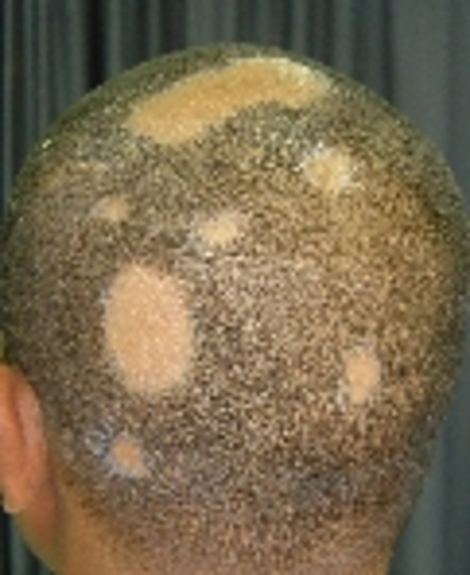 Alopecia Areata (AA) is an autoimmune hair loss condition. It presents itself in the form of patchy hair loss on the scalp or other areas where hair exists. Some have questioned if AA can also be triggered by emotional stress. It has been discussed in some medical journals but the exact mechanism has never been explored. There has been a study conducted and published on the relationship between stress and the pathogenesis of alopecia areata. This was done by subjecting AA-affected and normal lab mice to ether anesthesia (stress) through restraining the animal. Alopecia Areata (AA) is an autoimmune hair loss condition. It presents itself in the form of patchy hair loss on the scalp or other areas where hair exists. Some have questioned if AA can also be triggered by emotional stress. It has been discussed in some medical journals but the exact mechanism has never been explored. There has been a study conducted and published on the relationship between stress and the pathogenesis of alopecia areata. This was done by subjecting AA-affected and normal lab mice to ether anesthesia (stress) through restraining the animal.
The mice with alopecia areata had a marked increase in hypothalamic-pituitary-adrenal tone and activity centrally and peripherally in the skin and lymph nodes. Plasma corticosterone, adrenocorticotropic hormone, and estradiol levels were determined in this study as indicator or stress level, whereas gene expression in brains, lymphoid organs, and skin was measured by quantitative RT-PCR for corticotropin-releasing hormone, arginine vasopressin, proopiomelanocortin, glucocorticoid receptor, mineralocorticoid receptor, corticotropin-releasing hormone receptor types 1 and 2, interleukin-12, tumor necrosis factor-alpha, and estrogen receptors type-1 and type-2.
Compared to normal mice, there was an altered interaction seen between the adrenal and gonadal axis proving that the stress level in those animals was in fact higher. Stress also caused changes in the activity of the hypothalamus pituitary axis in the mice with AA.
In addition, animals with AA had significantly blunted corticosteroid and ACTH responses to acute ether stress (physiological stressor) and a deficit in habituation to repeated restraint stress (psychological stressor). These findings further suggest that altered brain responses caused by stress may be associated with the occurrence of alopecia areata, proving the hypothesis that stress plays an important factor.
Treatment of AA is done through observation of the patient and, in some cases, steroid injections can also prove useful. These treatment options have shown some improvement in those who have extensive types of AA like Alopecia Totalis. We do not recommend any patient to get hair transplant surgery if they have active AA since the chance of losing the newly transplant hair is very likely.
Although AA is not genreally treated with hair restoration, we at our offices of US Hair Restoration in LA, BH and Orange County visit and treat patients of AA in a regular basis.
Tags: AA, ACTH, adrenocorticotropic hormone, alopecia areata, alopeica totalis, arginine vasopressin, Avp, CORT, corticotropin-releasing hormone, estradiol, glucocorticoid receptor, hair loss, hair loss innovations, hair transplant, hair transplant surgery, lymphoid organs, mineralocorticoid receptor, proopiomelanocortin, RT-PCR, sress level
Posted in Beverly Hills hair transplant, California hair transplant, Los Angeles Hair Transplant, Orange County hair transplant | No Comments »
|
|








